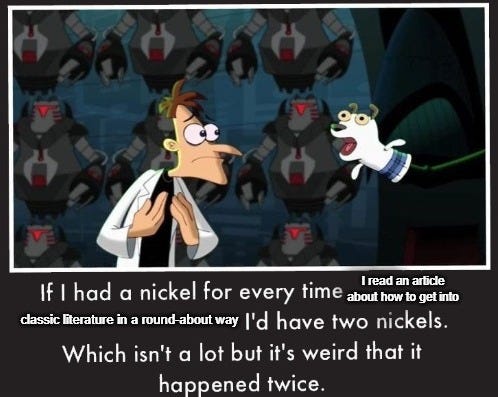Today is Holy Saturday, a day of contemplation and rest for Catholics and other Christians around the world.
Although not of such cosmic significance, Hollywood, too, is in a kind of interregnum. We’ve seen about five years of decline, due to the pandemic shutdowns, multiple strikes, and just general cultural shifts in audiences’ interests. A lot of people have been looking to the past and worrying about the future. So here’s some articles and videos about this strange period of time that I found interesting, and I think you will, too.
This is a long one, so if you’re reading it in your email, it might get truncated. Click the heading to read directly on the Substack website or app.
Good and Bad Christian Art
I haven’t seen The King of Kings, so I don’t really have an opinion on it, but I do think the Charles Dickens frame story looks like an interesting take—
I have seen a lot of people criticizing it sight-unseen, on the grounds that all Christian movies are bad. Honestly, this discourse just seems like the mirror version of the “anti-woke” critics, and it’s just about as interesting.1
Whether you’re Christian or not, I think you’ll find these two articles about ancient Christian art (from
) and modern church buildings (from the ) both thoughtful and incisive—More Buster
If you liked our most recent episode of Public Domain Theater, you’ll enjoy this Buster Keaton short, his first in a starring role—
As
pointed out on PDT, one of the fascinating parts of watching old films is seeing what they depict as “normal.” I had no idea the concept of “pre-fab” housing was over a hundred years old!And if you haven’t watched our Sherlock Jr commentary, you should!
Movies Looking Back on Themselves
Speaking of old movies, I recently watched Clear and Present Danger for the first time since the 90s. (Mainly because it happened to be at the top of the Kanopy welcome page, and I thought “Hey, I remember that movie… existed. And nothing else.”) One thing that struck me was that, although it was a sequel and an adaptation, it wasn’t really a movie that looked outside itself. It fit into the tradition of thrillers at the time, but there didn’t seem to be any overt homages to great spy movies of the past.
As often happens,
articulated my vague cloud of ideas better and sooner than I did myself.Longlegs (2024) unashamedly evokes Silence of the Lambs (1991) (until it doesn’t…). The Substance (2024) is a Cronenberg retread. Monkey Man (2024) outright namedrops the John Wick franchise (while aping its neon-cool aesthetic). Maxxxine (2024) can be summarised, in the words of a commentator whose name I’ve forgotten, as “I too have seen the films of Brian de Palma.”
However good they are - and some truly are great - these movies are strict subsets of earlier films. Their ambitions feel constrained, their identities small. This closed-loop cinema feels oddly hermetic: cinema as Narcissus, obsessed with its own reflection.
Read the whole thing here—
Reading the Classics
Another thing about Clear and Present Danger I noticed—it expected you to pay attention. I’m not saying the acting was subtle or the dialogue was laden with subtext. It’s just that no one overtly recapitulated the plot, or stated the purpose of the MacGuffin to someone who already knows, just in case you were looking at your phone when the plot twist happened.
One thing I like about going to the movies, rather than watching them on my couch, is the lack of distraction. I’m basically forced to stretch my attention span. It’s also why I’ve gone back to reading physical books, more than my Kindle. I’m less tempted to click open a new tab when the tabs are made of paper.
As I’m getting back into an older way of reading, I’m also looking for older things to read. Lo and behold, substack provides me with not one, but two great pieces on the subject, from
and —Our Attention Spans
The attention span crisis is real, and has been for some time.
It’s definitely having an effect on Writer’s Block, as Writing with Andrew points out—
What Are We to Do About It?
So, if no one can watch something for more than fifteen seconds before swiping away, what’s going to happen to the movies? The always-insightful
provides two very different visions of the future, one dystopian and one not-quite utopian—Meanwhile, Owen Gleiberman offers advice to Variety readers: “How Can the Movie Industry Thrive Again? Simple: Make 100 Movies a Year That People Want to See”. The headline is facetious, but the article is well worth a read.
Chris Johnson, the CEO of the Classic Cinemas chain. “[Tentpoles] are important,” he said, “but quantity is more important. I’ll take six movies that are doing reasonable business over a giant movie that creates a vacuum.”
He said a mouthful. What he’s talking about is nothing less than the return of the mid-budget movie for adults — something that hasn’t actually gone away (just peruse those titles I listed above), but has faded because it’s been allowed to fade. “Anyone but You” was a major hit, and how many studio rom-coms were released in its wake? None.
That’s partly because what we once called the blockbuster mentality has only metastasized. Let’s be clear about what that mentality says. It says that in the executive corridors, only wimps want to make movies that are modest successes — that singles and doubles are for suckers. That mentality is now helping to kill the industry.
The film business is made up of competing companies, and these days, competition tends to be metaphysically cutthroat. You want to be up, and you want your rivals to be down. But that’s not how the film business used to work. It was once more of a rising-tide-lifts-all-boats thing. And the industry today needs to start thinking as one, to unite and slay the beast that is the streaming world. Because streaming is kicking ass in a way that it doesn’t need to.
What do you think?
I’m working on a longer piece about film critics and “objectivity,” so consider this a preview.













Thanks so much for the share, Matt. Honoured to be in such great company!